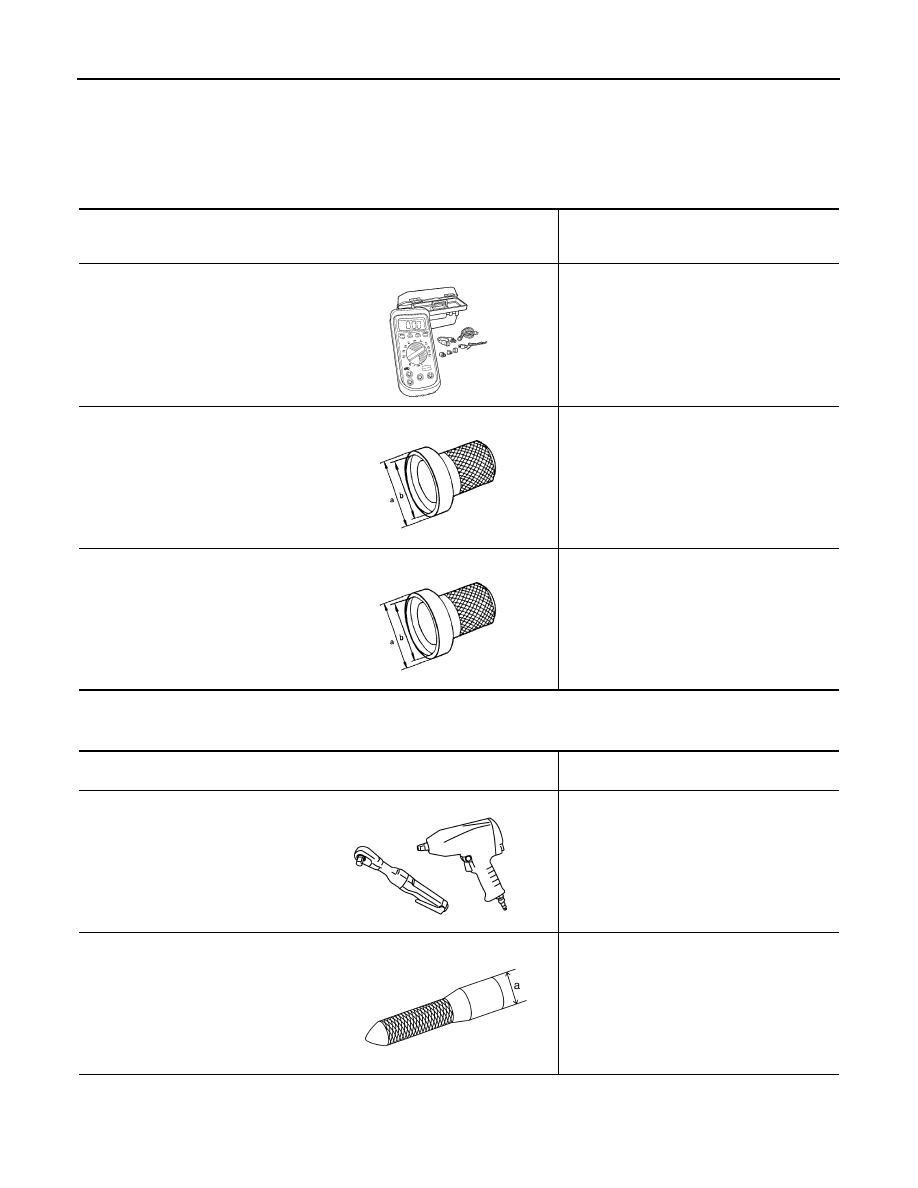содержание .. 1400 1401 1402 1403 ..
Nissan Murano. Manual - part 1402

TM-150
< PREPARATION >
[CVT: RE0F09B]
PREPARATION
PREPARATION
PREPARATION
Special Service Tools
INFOID:0000000009719560
The actual shapes of Kent-Moore tools may differ from those of special service tools illustrated here.
Commercial Service Tools
INFOID:0000000009719561
Tool number
(Kent-Moore No.)
Tool name
Description
—
(OTC3492)
Oil pressure gauge set
Measuring line pressure
ST33400001
(J-26082)
Drift
a: 60 mm (2.36 in) dia.
b: 47 mm (1.85 in) dia.
Installing differential side oil seal
KV40100621
(J-25405)
Drift
a: 76 mm (2.99 in) dia.
b: 69 mm (2.72 in) dia.
Installing side oil seal (transfer joint)
SCIA7531E
ZZA0814D
ZZA0814D
Tool number
Tool name
Description
Power tool
Loosening nuts and bolts
31197CA000
Drive plate location guide
a: 14 mm (0.55 in) dia.
Installing transaxle assembly
PBIC0190E
SCIA2013E